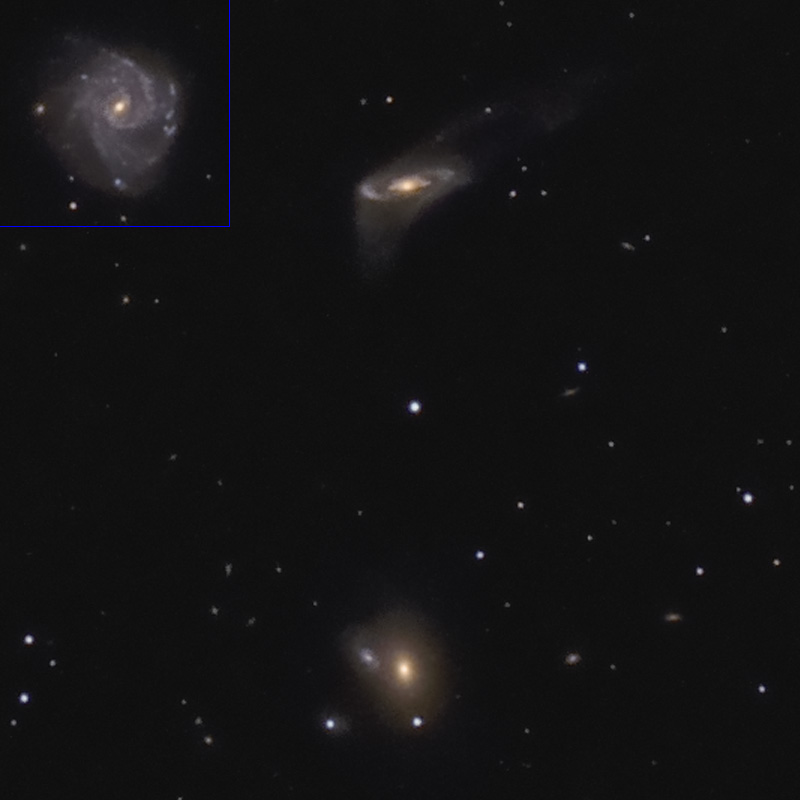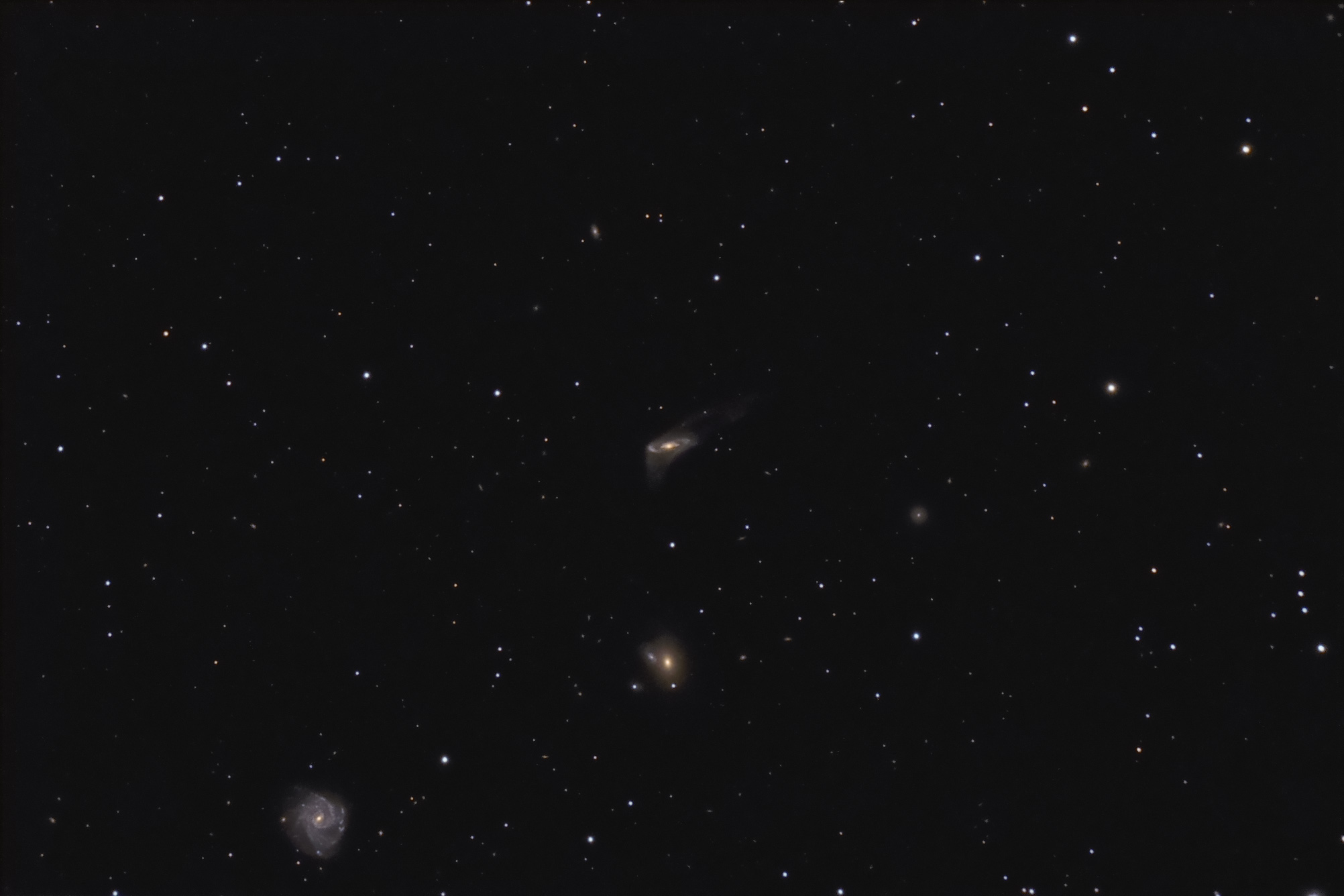| Description | Images |
Object name: ARP288Designation(s): ARP288, NGC5221, NGC5222, NGC5226, NGC5230, ARP 288 is a triple galaxy system in the very northeast corner of Virgo about 320 million light-years away. Arp put it in his catalog under Wind Effects. Apparently referring to the northern member of the trio, NGC 5221. It has some faint but huge plumes. South of it is the odd galaxy pair of NGC 5222. It consists of a small blue spiral and a larger golden elliptical galaxy. Arp's comment refers to NGC 5221 when it says: "Streamers in both directions from edge of spiral". Why he included the pair that is NGC 5222 I'm not sure. They are related in that their redshift is about the same but neither shows distortion that could easily explain NGC 5221's plumes. Related Designation(s):2MASS J13345589+1349568, 2MASS J13345607+1349567, 2MASS J13350362+1355198, 2MASS J13353187+1340342, 2MASX J13345590+1349571, 2MASX J13350365+1355200, 2MASX J13353188+1340344, 2MASXi J1334559+134957, 2MASXi J1335036+135520, 2MASXi J1335318+134034, 2MFGC 10941, AGC 231050, ALFALFA 1-611, ALFALFA 1-613, ALFALFA 1-615, ARP 288, ARP 288 NED03, ARP288, ASK 441319.0, CGCG 073-039, CGCG 073-040, CGCG 073-043, CGCG 1332.5+1400, CGCG 1332.5+1405, CGCG 1333.1+1356, ECO 04180, ECO 04188, ECO 06361, HDCE 0807 NED002, HDCE 0807 NED003, HIPASS J1335+13, IRAS 13330+1355, IRAS F13324+1405, IRAS F13330+1355, KPG 383, LDCE 0985 NED005, LDCE 0985 NED006, MAPS-NGP O_499_0014145, MAPS-NGP O_499_0026909, MAPS-NGP O_499_0038641, MCG +02-35-005, MCG +02-35-006, MCG +02-35-009, NFGS 140, NGC 5221, NGC 5222, NGC 5226, NGC 5230, NGC5221, NGC5222, NGC5226, NGC5230, NSA 076017, NSA 143645, NSA 163737, NVSS J133455+134957, PGC 047869, PGC 047871, PGC 047877, PGC 047932, SDSS J133503.61+135519.7, SDSS J133503.62+135519.8, SDSS J133531.87+134034.2, SSTSL2 J133531.88+134034.2, UGC 08558, UGC 08559, UGC 08573, USGC U549 NED01, USGC U549 NED02, UZC J133455.9+134957, UZC J133531.9+134034, UZC-CG 196 NED02, UZC-CG 196 NED03, VIII Zw 325, VV 315, VV 315b, [M98j] 203 NED01, [M98j] 203 NED02, [M98j] 203 NED03, [TTL2012] 193874, [ZSK75] 1332.5+1405, |
Permanent link: https://images.mantrapskies.com/catalog/ARP-GALAXIES/ARP288-NGC5221-NGC5222-NGC5226-NGC5230/ARP288L4X10RGB2X10X3R-CROP150.jpg |


